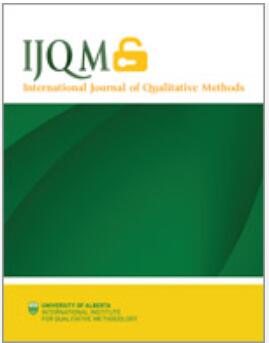Co-designing Guidelines for Using Arts-based methods when Conducting Youth Mental Health Research in Online Environments
IF 3.9
2区 社会学
Q1 SOCIAL SCIENCES, INTERDISCIPLINARY
引用次数: 0
Abstract
Co-designing research-informed guidelines with youth for adapting research methods to other contexts has received little research attention. We report on guidelines co-designed with youth for adapting arts-based methods (ABM) for youth mental health (MH) research in online environments. Seven youth co-researchers participated in 3 co-design workshops and 2 graphic recording focus groups. Data analysis involved a thematic analysis approach. We identified one overarching theme (sustaining mindful presence when conducting research) and 4 subthemes (creating a safe space, youth having a say, facilitating meaningful engagement, paying receptive attention throughout the research process). Facilitating participants’ authentic expression in online environments requires: 1) Letting youth self-identify; 2) incorporating diversity and inclusion; 3) providing accommodations, recognition, and compensation; 4) language considerations; 5) offering ABM training and resources for creating art; 6) using virtual platforms youth use; 7) being mindful of ethical considerations and technology fatigue; 8) addressing barriers in accessing and using technology; 9) providing choice in type of ABM and research methods used; and 10) providing options for communicating during research activities and for engaging in research outside of allotted time (e.g., email, group chat). These research-informed guidelines can be useful for conducting youth MH research and other youth research in online environments.在线环境下开展青少年心理健康研究时使用基于艺术的方法的共同设计指南
与年轻人共同设计研究指导方针,使研究方法适应其他情况,很少受到研究的关注。我们报告了与青少年共同设计的指导方针,以适应基于艺术的方法(ABM)用于在线环境中的青少年心理健康(MH)研究。7名青年共同研究员参加了3个共同设计工作坊和2个图形记录焦点小组。数据分析采用专题分析方法。我们确定了一个总体主题(在进行研究时保持正念存在)和4个副主题(创造一个安全的空间,年轻人有发言权,促进有意义的参与,在整个研究过程中给予接受性关注)。促进参与者在网络环境中的真实表达需要:1)让青少年自我认同;2)融合多样性和包容性;3)提供住宿、表彰和补偿;4)语言方面的考虑;5)提供ABM培训和艺术创作资源;6)青少年使用虚拟平台;7)注意道德考虑和技术疲劳;8)解决获取和使用技术方面的障碍;9)提供ABM类型的选择和使用的研究方法;10)提供在研究活动期间进行交流和在规定时间之外从事研究的选项(例如,电子邮件,群聊)。这些以研究为依据的指导方针可用于在网络环境中进行青年MH研究和其他青年研究。
本文章由计算机程序翻译,如有差异,请以英文原文为准。
求助全文
约1分钟内获得全文
求助全文
来源期刊

International Journal of Qualitative Methods
SOCIAL SCIENCES, INTERDISCIPLINARY-
CiteScore
6.90
自引率
11.10%
发文量
139
审稿时长
12 weeks
期刊介绍:
Journal Highlights
Impact Factor: 5.4 Ranked 5/110 in Social Sciences, Interdisciplinary – SSCI
Indexed In: Clarivate Analytics: Social Science Citation Index, the Directory of Open Access Journals (DOAJ), and Scopus
Launched In: 2002
Publication is subject to payment of an article processing charge (APC)
Submit here
International Journal of Qualitative Methods (IJQM) is a peer-reviewed open access journal which focuses on methodological advances, innovations, and insights in qualitative or mixed methods studies. Please see the Aims and Scope tab for further information.
 求助内容:
求助内容: 应助结果提醒方式:
应助结果提醒方式:


